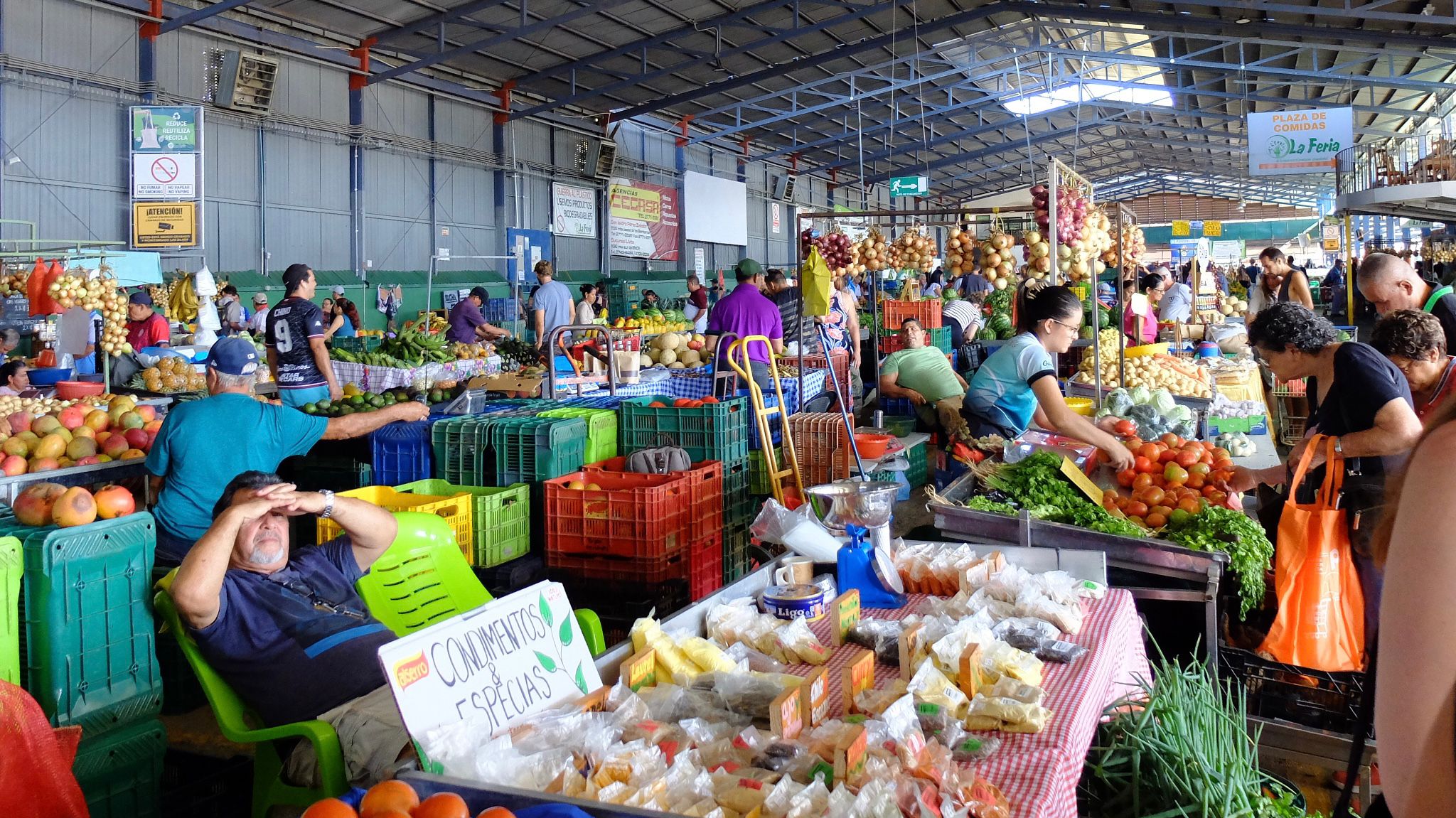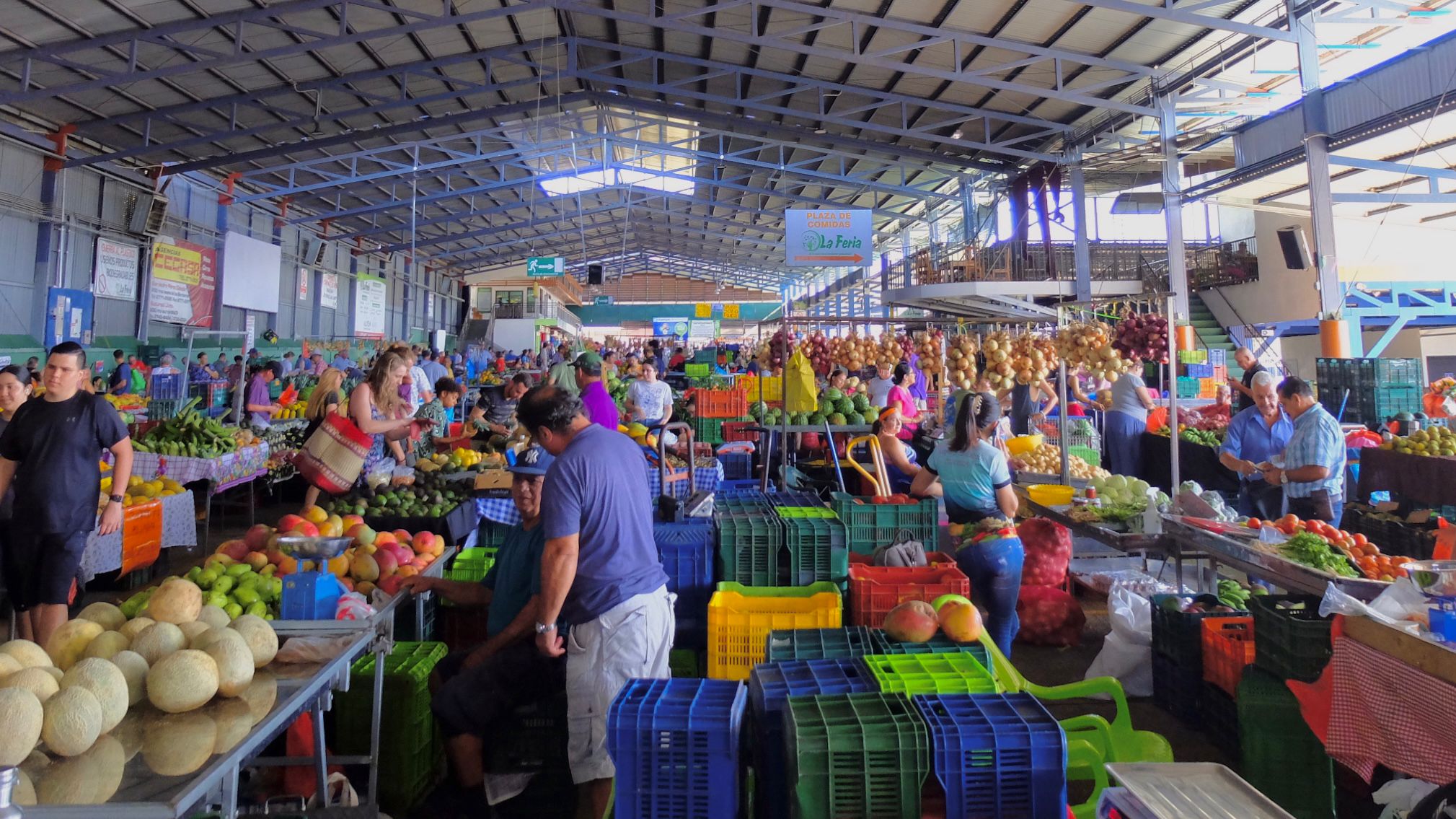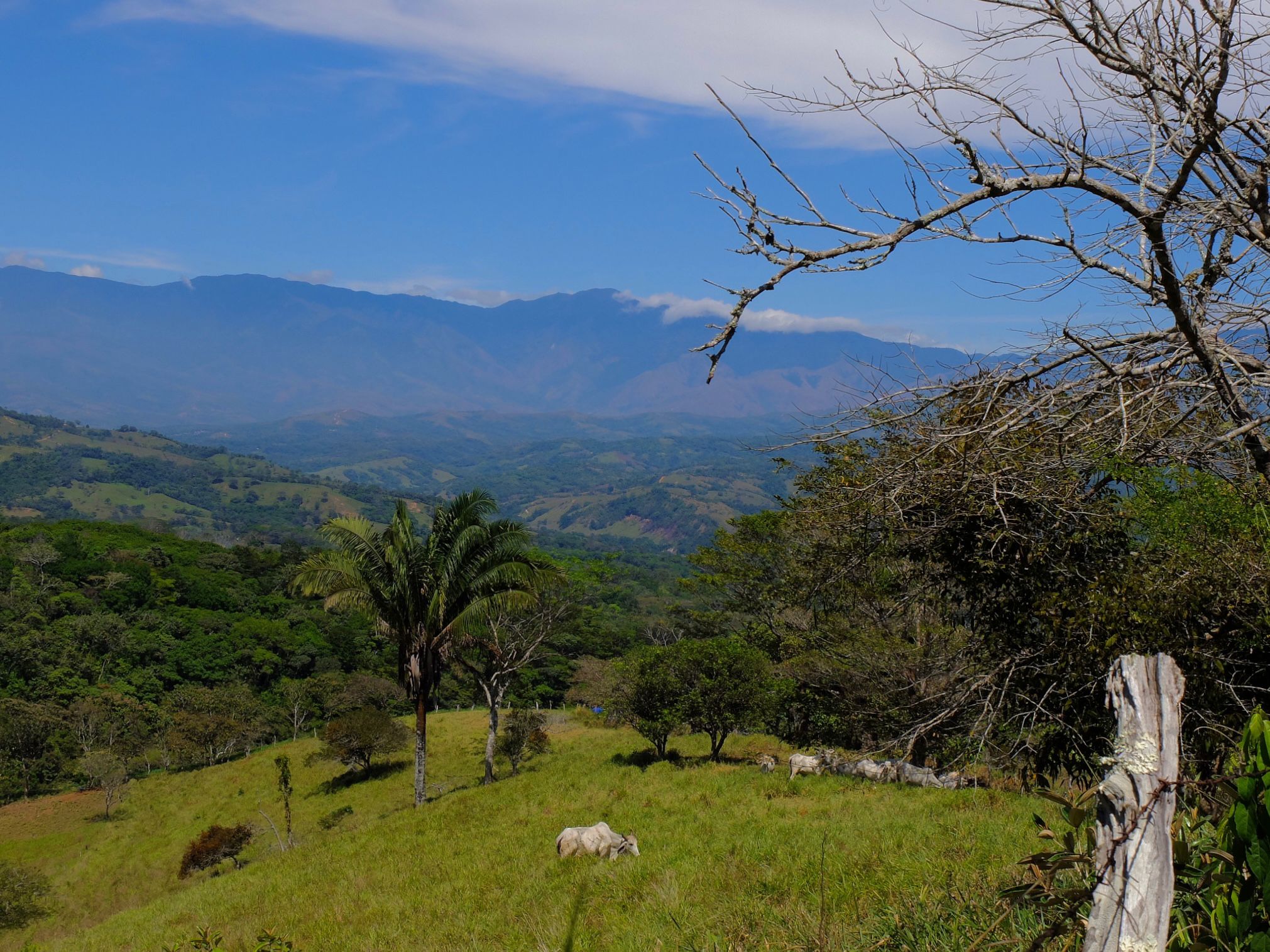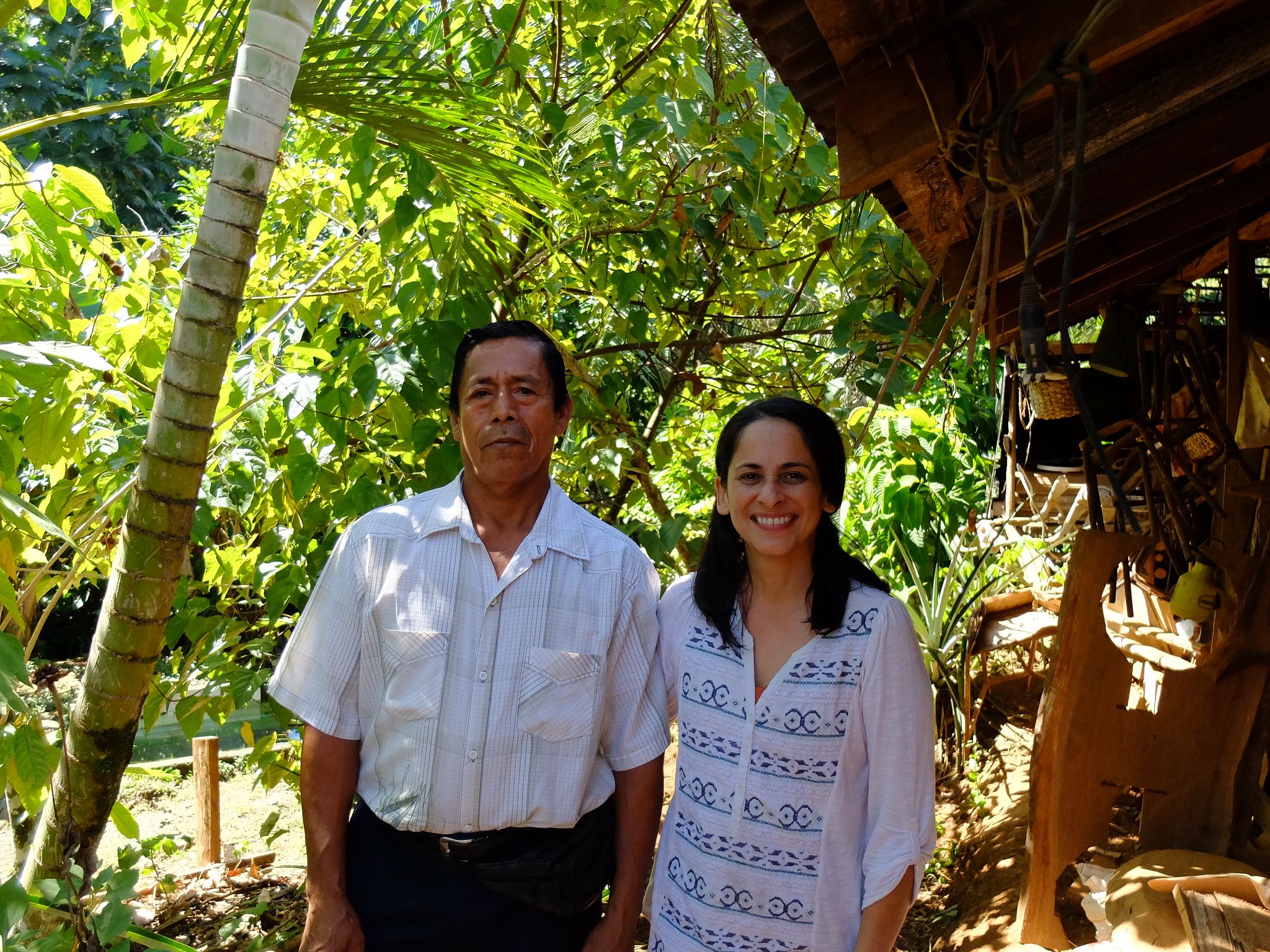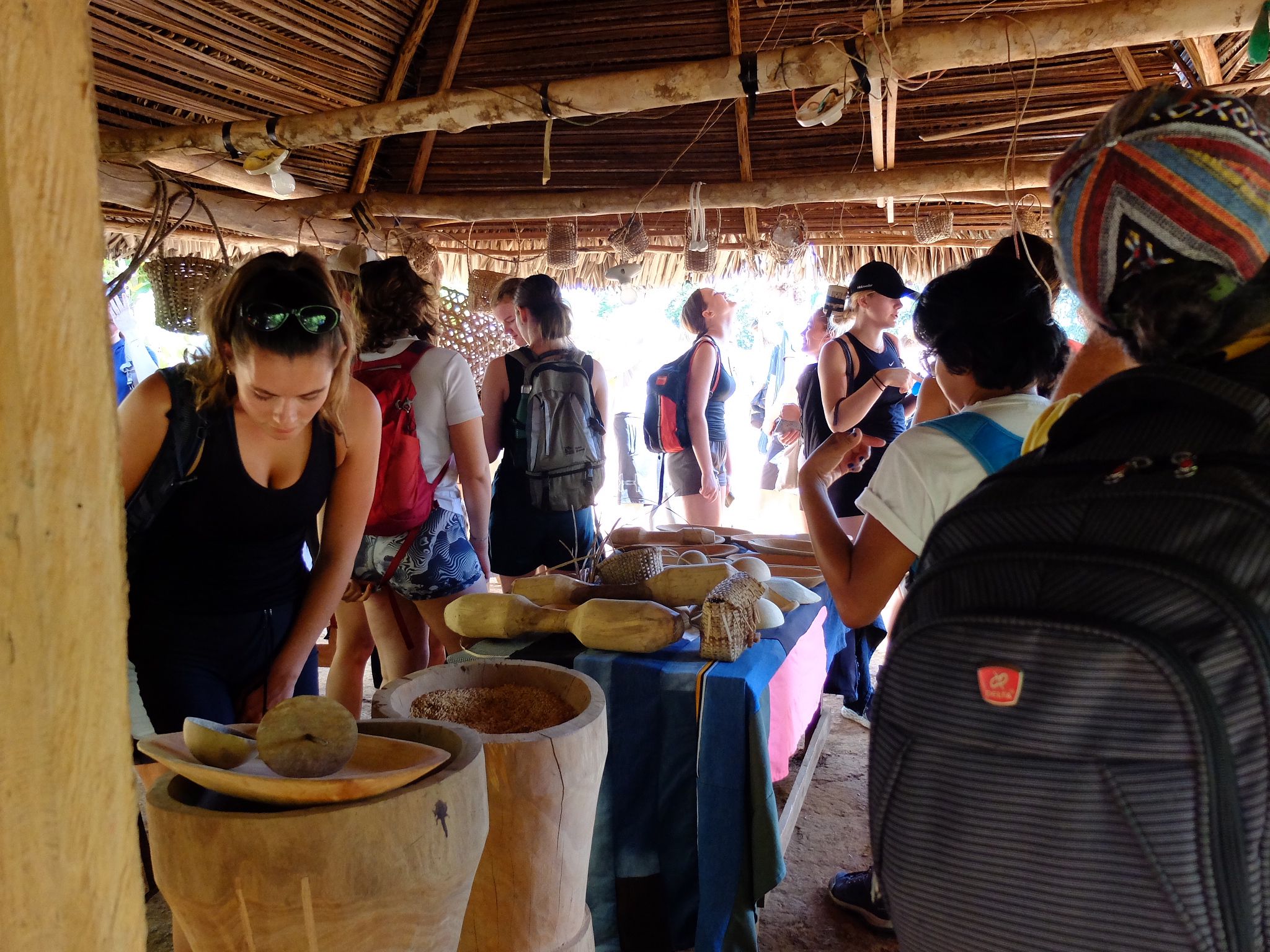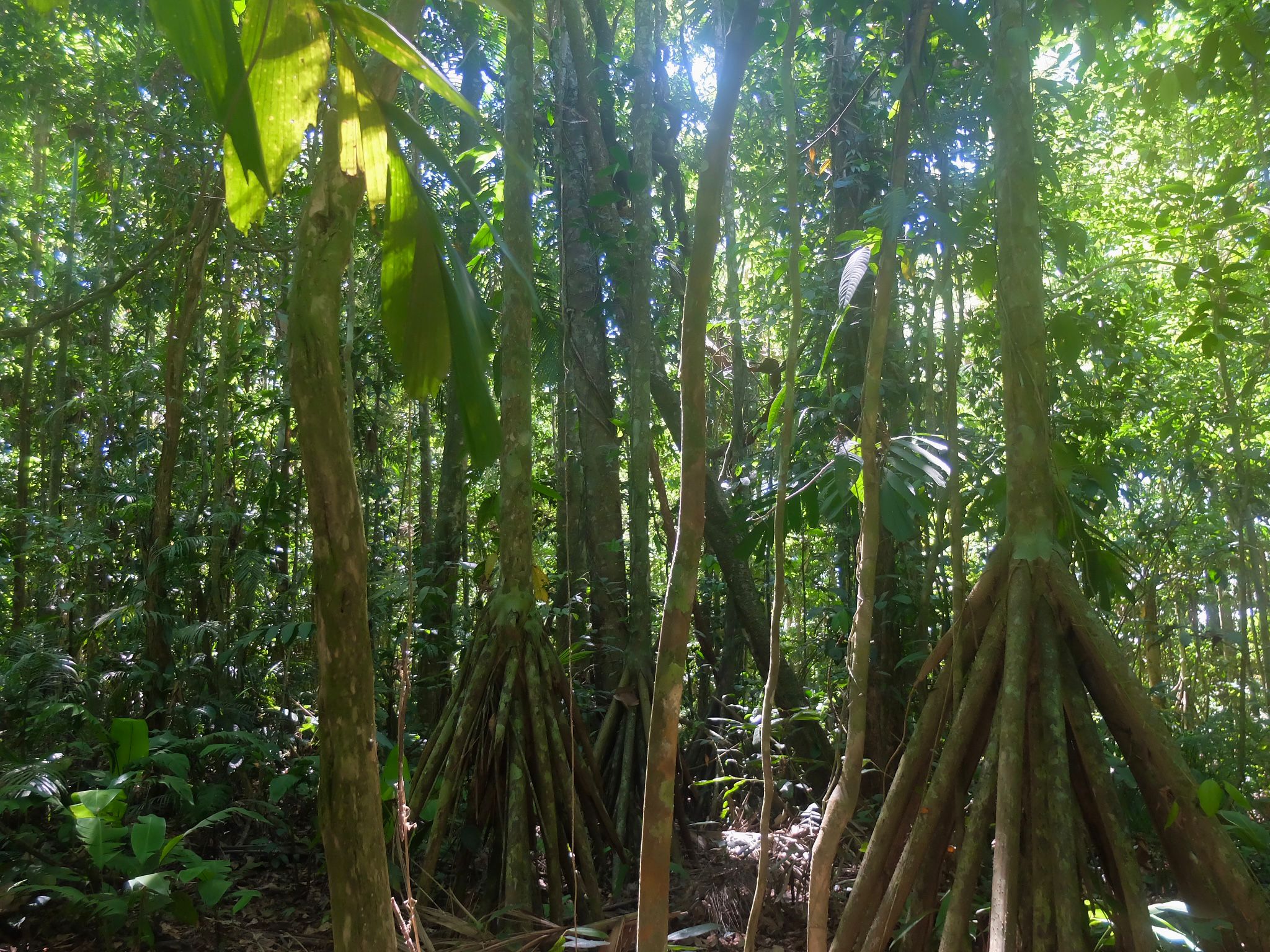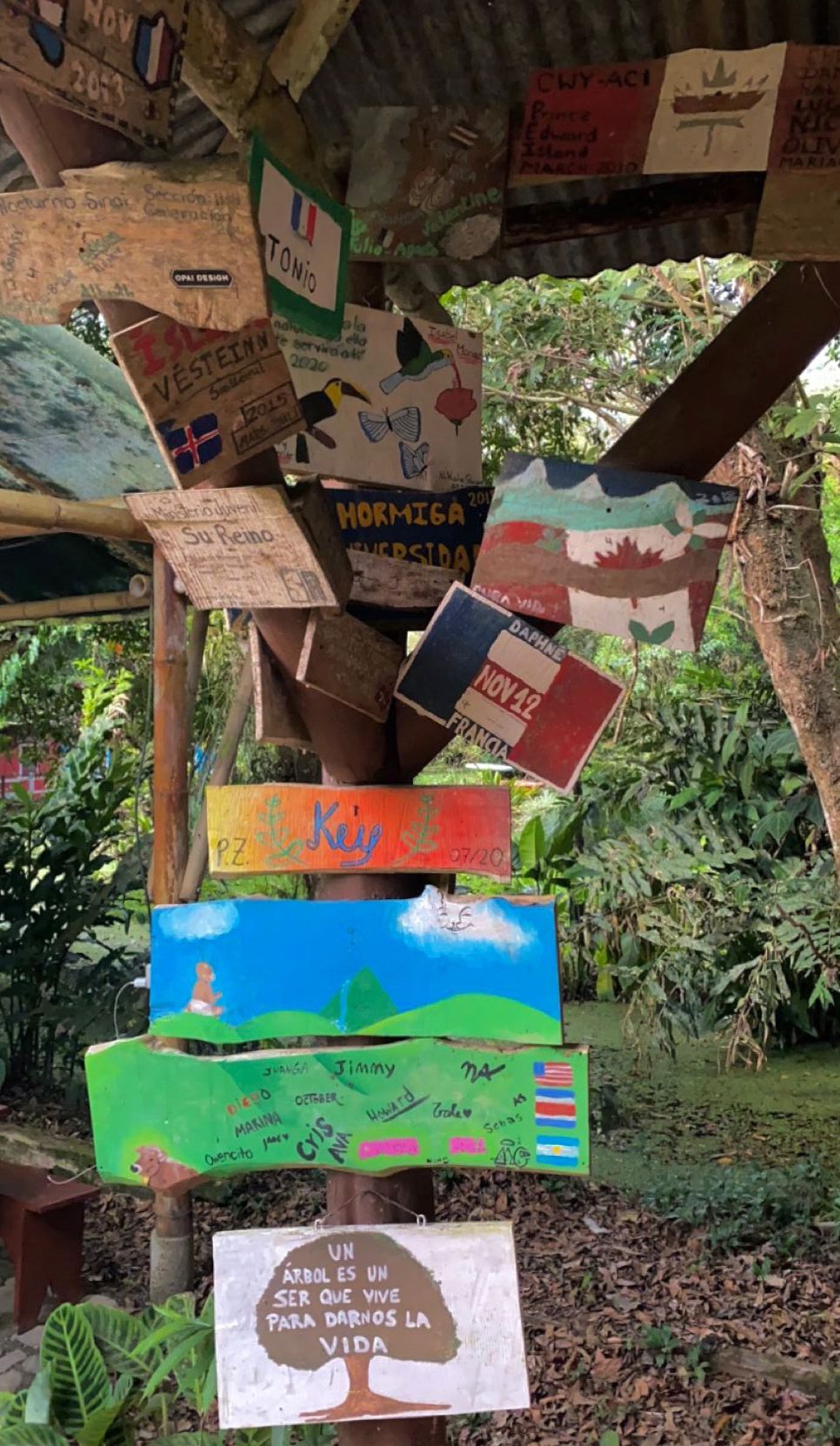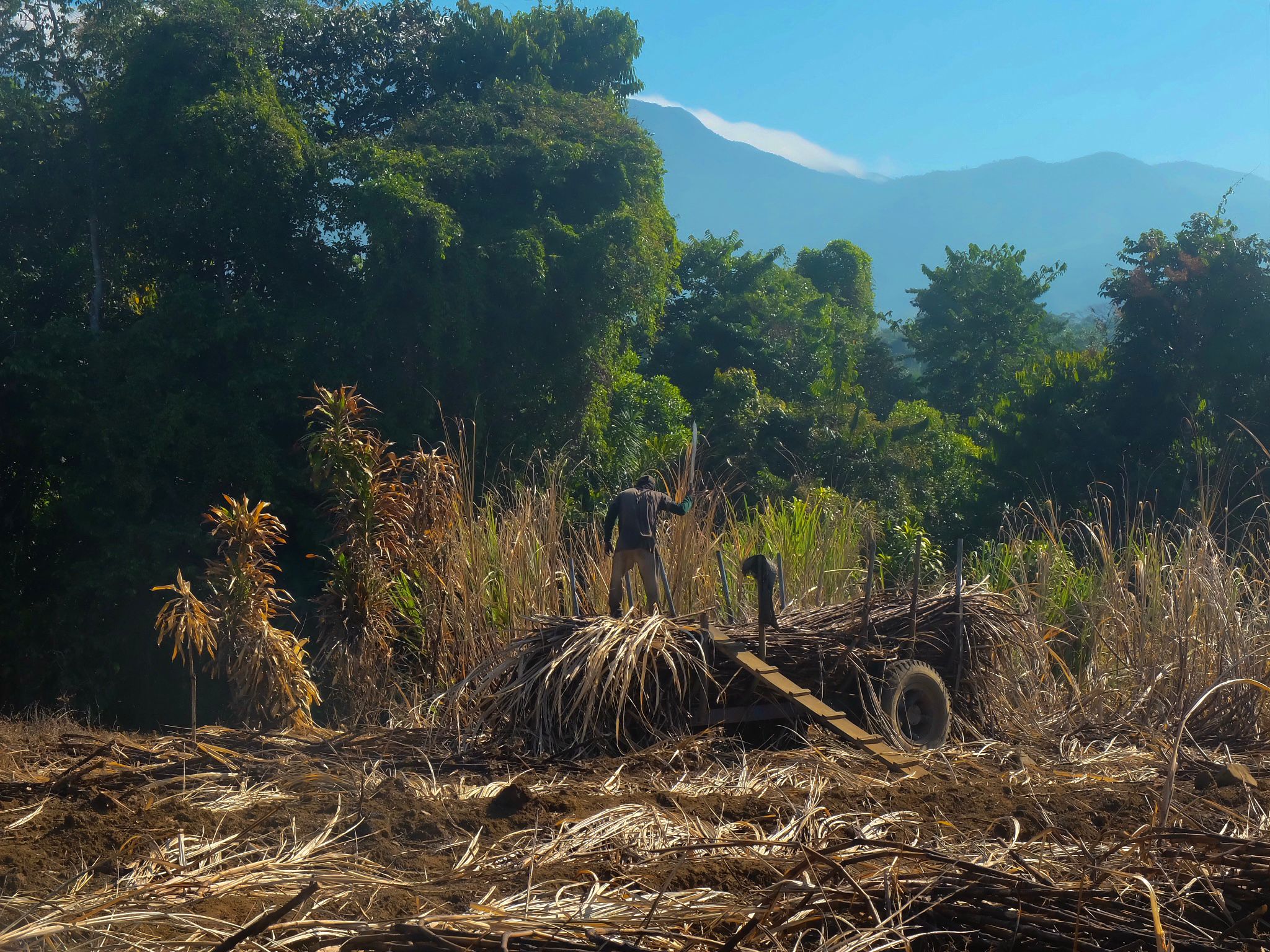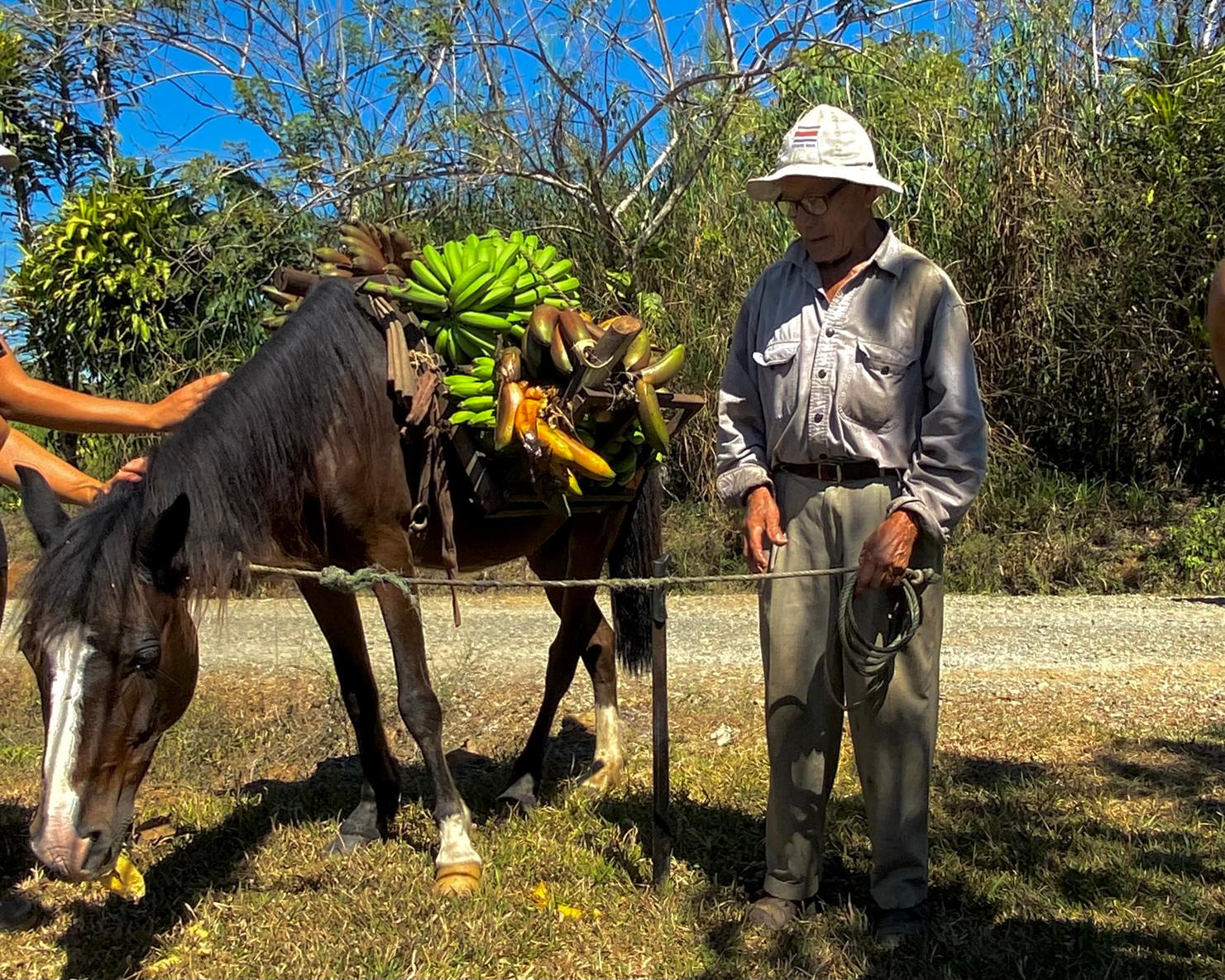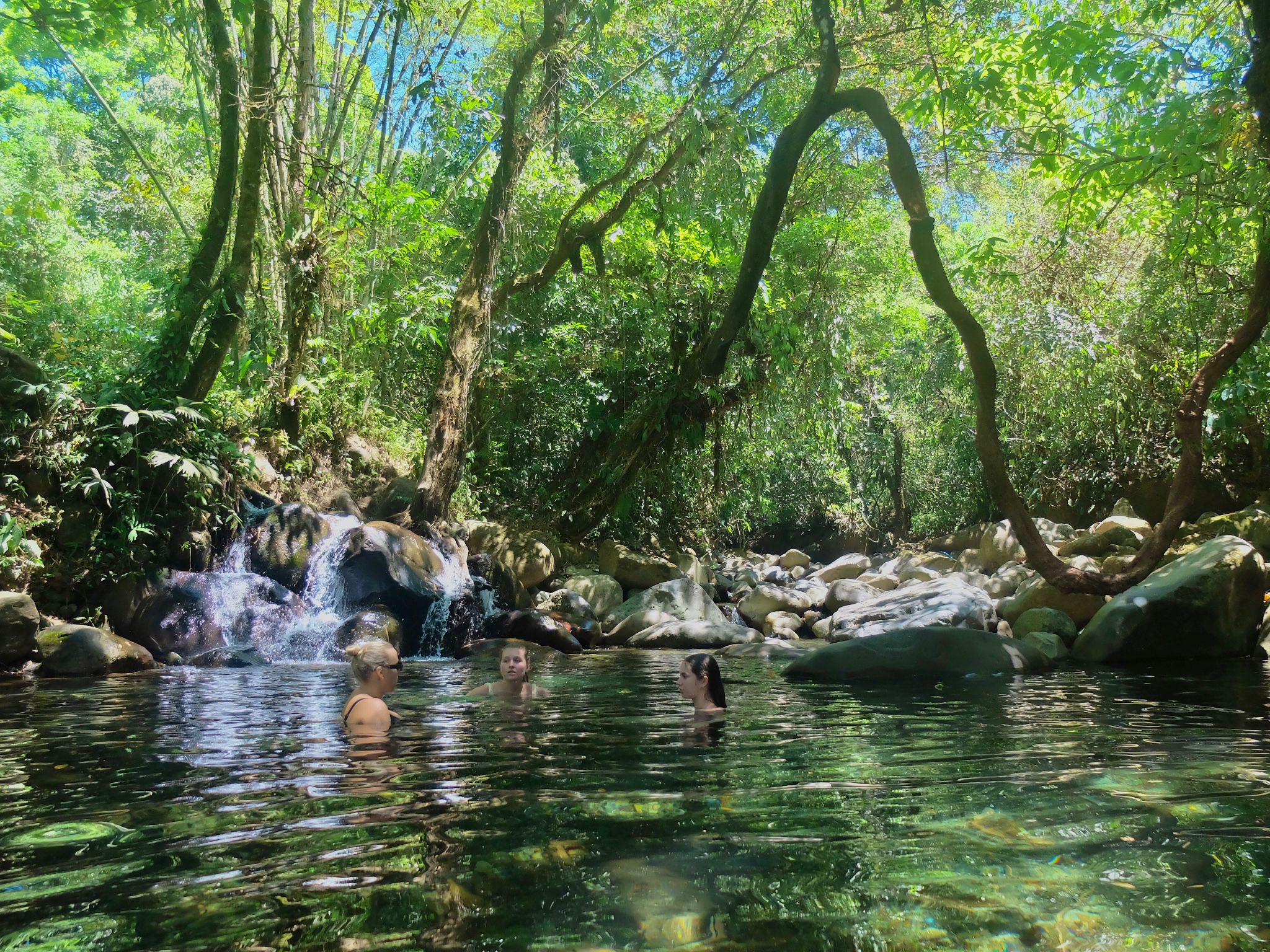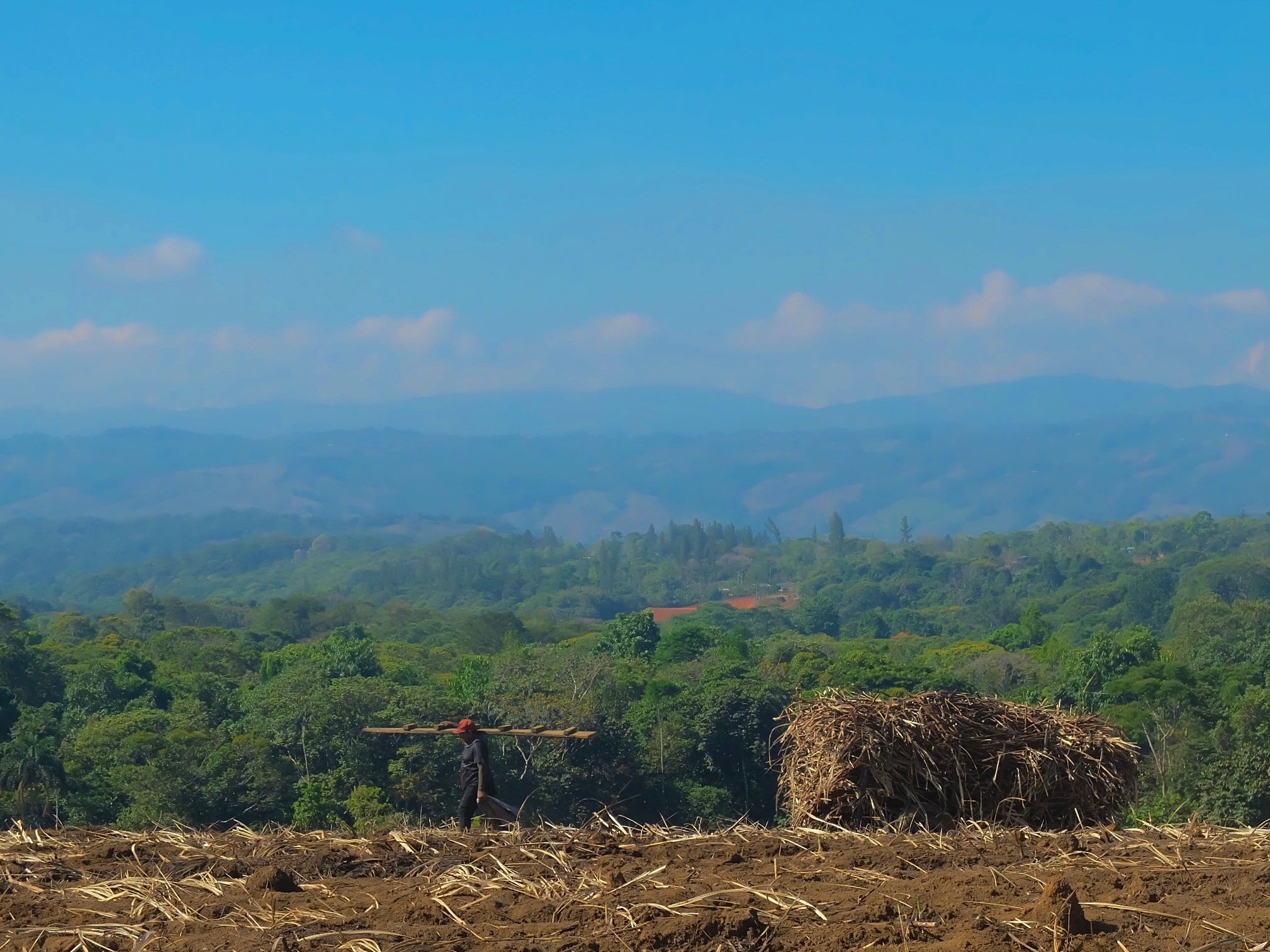
In addition to the Spanish course, ¼ of the semester in San Isidro consists of a course called “Sustainability and conservation”. As Costa Rica is known for being one of the countries with the highest biodiversity in the world, representing nearly 5%, this country is the perfect place to study sustainability. In detail, the course dives into policy implementations and nature management in relation to climate change and protection. The course is based on a combination of academic readings and practical excursions – which makes it easier for us to get a fuller understanding of what sustainability in Costa Rica really entails. In this blogpost, I will share my experiences from our four different field excursions during the course.
Our first excursion was to the Farmers market, or “La Feria”. This is a space where local farmers get to sell their crops directly to the customers, which gives the buyer a cheaper price and better-quality products and the seller earns a higher price. La Feria has been very important in Costa Rica for ensuring the farmers livelihoods – especially after the pandemic. Many of the students visit La Feria on a weekly basis, as you can buy a lot of delicious fruits and vegetables here for a much cheaper price than at the supermarkets.
Our second excursion was to Terraba – an indigenous territory. The trip consisted of walking a beautiful hike and listening to stories told by indigenous representatives about their fight for indigenous rights and nature conservation. It taught us how difficult it has been to be a minority in Costa Rica, and how dangerous it can be to raise your voice against the government. However, as one of the indigenous leaders told us; it is important to continue working for what you know is right.
Later, the students have an overnight visit at FUDEBIOL. This is an organization focusing on protecting the local river and forests through sustainable practices. During our stay, we got to learn more about their work and take a hike in the expanding forests nearby to see different animals and plant species. Here, some of us even got to see a hybrid between a scorpion and a cockroach.
Our final, and longest, excursion is to Longo Mai. “Longo Mai” translates to “Long Life” and is a farmer community in an area with over 450 hectares of tropical rainforests. For 5 days, we stayed with local host families and visited a lot of different farmer projects; including sugar cane plantations and cacao workshops. It was an insightful experience, teaching us about a more eco-friendly, sustainable and authentic way of life.
All in all, it has been really interesting to obtain both theoretical and practical knowledge regarding such a broad concept as “sustainability”. Listening to the local farmers, indigenous people and members of the Longo Mai community provides a more nuanced image of different lifestyles here in Costa Rica. These field trips are unique and authentic – and provides perspectives that are difficult to obtain elsewhere.
– Pernille
